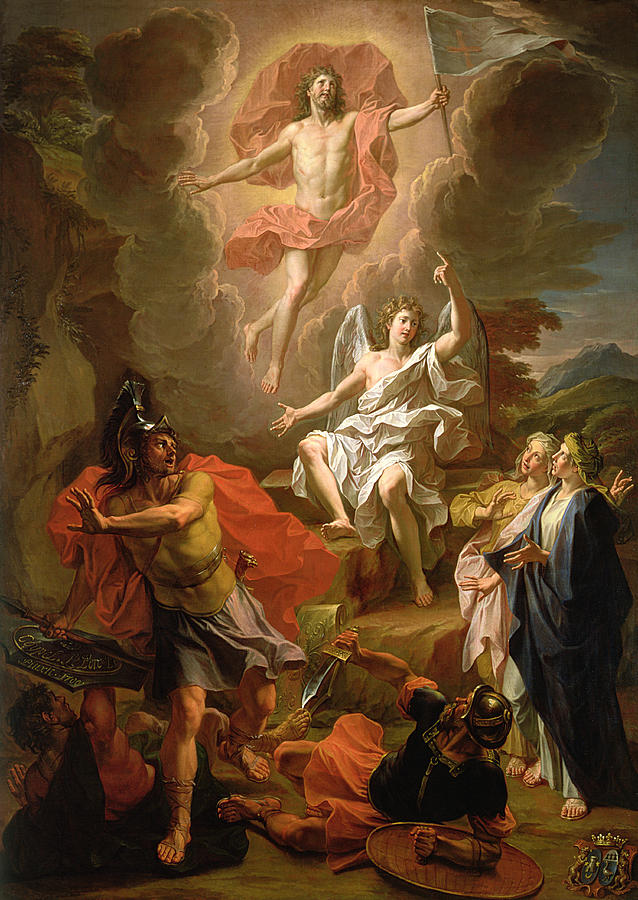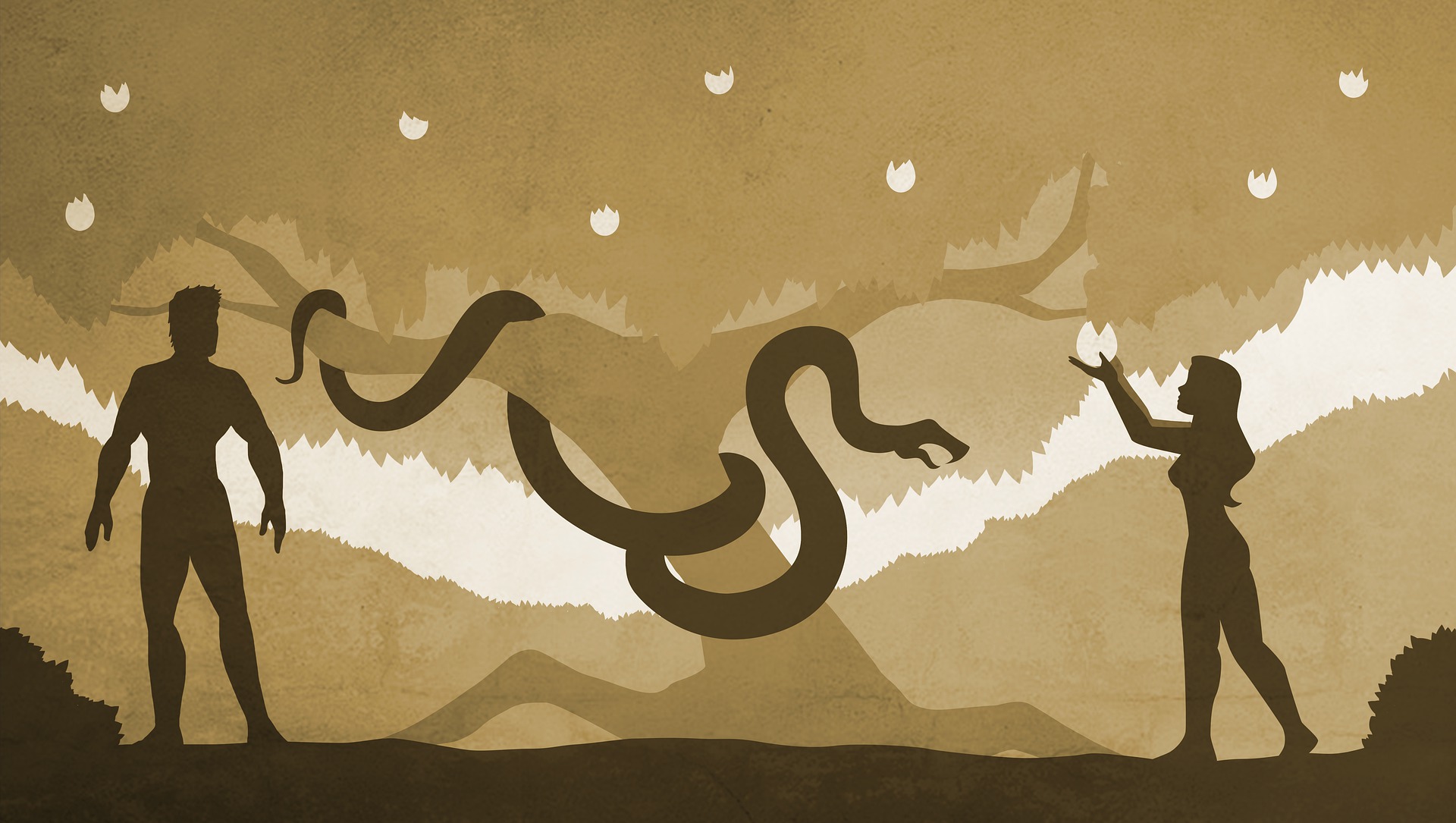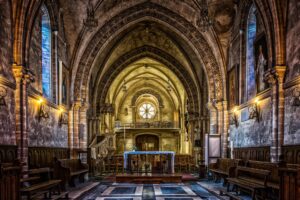Few stories in the Judeo-Christian tradition carry as much symbolic weight as the account of the Fall of Adam in Genesis 3. Its power transcends time and culture. On one level, it depicts a tragic moment of disobedience; yet for Catholics, it also plants the seed of hope—the eventual triumph of Christ, the New Adam. When we read about Adam and Eve, we’re not merely looking at ancient figures in a garden; we’re witnessing the human struggle etched into the foundations of salvation history.
Contrary to a superficial reading, the Fall is not just a sad moment in prehistory. It represents a cosmic drama that touches every aspect of human life, calling each of us to examine our own frailties. Even as Adam’s sin introduces death and discord, it sets the stage for God’s redemptive plan in Christ—a truth that Catholic tradition has cherished and deepened over centuries.
Table of Contents
The Nature of the Fall: Disobedience as Cosmic Fracture
Adam’s Role as Covenant Head
In Catholic theology, Adam occupies a special position as the federal head of the human family. By breathing into Adam’s nostrils the breath of life, God elevates humanity above the rest of creation, bestowing reason, free will, and the vocation to steward the earth (Genesis 2:7, Genesis 2:15). Adam’s subsequent fall into sin, however, doesn’t affect him alone; because he is the father of all, his disobedience drags the entire human race into spiritual alienation.
Immediate Consequences
The Fall disrupts three core relationships:
- With God: A rupture of intimacy—Adam and Eve hide themselves from the divine presence (Genesis 3:8).
- With Each Other: Suspicion and blame color human relationships (Genesis 3:12).
- With Creation: Pain in childbearing, toil in farming, and the universal presence of death (Genesis 3:16–19).
From a theological viewpoint, the cosmic fracture introduced by Adam’s sin resonates far beyond Eden. St. Paul later writes that “exercised dominion from Adam to Moses” (Romans 5:14), underscoring the universal fallout. The Catechism of the Catholic Church (CCC) echoes this, teaching that we inherit not guilt in a strictly personal sense but a wounded nature and an inclination to sin—a condition called concupiscence.
A Wound at the Core
What truly died in Eden was not just physical immortality but divine friendship. Our first parents, created in God’s image, forfeited that pristine grace, requiring a new plan of rescue. In Catholic tradition, Adam’s fall underlines humanity’s deep need for a Savior—the seeds of sin are within every human heart, but so is the longing for redemption.
Shadows of the Cross: Early Hints of Salvation
The Protoevangelium
Despite the gravity of Adam’s disobedience, Scripture holds out a flicker of hope almost immediately. In Genesis 3:15, God addresses the serpent: “I will put enmity between you and the woman, and between your offspring and hers; he will strike your head, and you will strike his heel.” Often called the Protoevangelium or “first gospel,” this verse prefigures a future clash—one in which the offspring of Eve will triumph. For Catholics, this lines up perfectly with Christ’s eventual victory on the Cross, where He crushes the power of sin and death.
A Mother’s Role
Many Church Fathers see Mary as the New Eve, intimately linked to this prediction. Her “Yes” to God counters Eve’s “No,” the latter having been deceived by the serpent. Thus, the story of human salvation begins with a woman and her offspring—bringing forth a Messiah who will right Adam’s wrongs. In fact, the same verse from Genesis that curses the serpent includes the promise that a woman’s seed will overcome evil. This dual drama—Eve’s guilt overshadowed by Mary’s fidelity—reverberates throughout Catholic tradition, culminating in Mary’s participation in her Son’s redemptive mission.
Foreshadowing in Sacrifice
Another subtle hint emerges in Genesis 3:21, where God clothes Adam and Eve in animal skins, suggesting a sacrificial act. Throughout the Old Testament, sacrifices serve as placeholders or figures that anticipate the one ultimate sacrifice in Christ. By making garments to cover their shame, God foreshadows His final covering of humanity’s sin through the Lamb who takes away the sin of the world (John 1:29).

The Fall in Light of the Church Fathers
Patristic Interpretations
The early Fathers of the Church built upon the biblical narrative to draw out richer meanings:
- St. Irenaeus painted Adam as childlike, misled into disobedience, while emphasizing the grace in Christ that undoes all wrongdoing.
- St. Augustine considered the Fall not merely an anecdote but the fundamental reason the entire cosmos “groans” for liberation (Romans 8:19–22). He underlined pride as the root of Adam’s sin, reversed by Christ’s humility.
Felix Culpa: The Happy Fault
From Augustine’s thinking emerges the famous phrase in the Easter Vigil’s Exsultet: O felix culpa—“O happy fault.” The Church sees a paradox: Adam’s sin, in all its devastation, nonetheless creates the occasion for Christ’s redemptive Incarnation. In a sense, the Fall heightens God’s display of mercy. Instead of leaving humanity in despair, He lovingly orchestrates a plan culminating in the Passion, Death, and Resurrection of His Son.
Lessons for the Present
Patristic reflections still speak powerfully today. They remind us that beneath the sorrow of sin lies the promise of grace. Each moral failing echoes Adam’s rebellion, but each repentant heart experiences the joy of being found by Christ. The tragedy that began in Eden was always destined for a redemptive turning point in the fullness of time (Galatians 4:4).
Christ the New Adam: A Fulfilling Counterpoint
Where Adam Fell, Christ Obeyed
In Catholic thought, Jesus is explicitly called the New Adam (1 Corinthians 15:45). Where the first Adam grasped at equality with God (Genesis 3:5–6), Christ “emptied Himself” in total obedience (Philippians 2:5–8). Adam’s pride unravels creation’s harmony; Christ’s humility stitches it back together.
Garden Parallels
Scripture highlights a striking contrast between Eden and Gethsemane. In Eden, Adam sleeps and awakens to sin; in Gethsemane, Christ keeps vigil, drenched in sweat like drops of blood, willing to drink the cup of suffering. While Adam’s “No” condemned humanity to exile, Christ’s “Yes” invites humanity into reconciliation. The Cross, then, is the Tree of Life for those who believe.
Mary as New Eve
Parallel to Christ’s role as New Adam is Mary’s role as New Eve. The early Church saw Mary’s consent at the Annunciation (Luke 1:38) as reversing Eve’s unbelief. At the Cross, Mary stands faithfully, echoing the unwavering “Yes” that shapes salvation history (John 19:25–27). The synergy between Christ and Mary underscores that God’s plan, foreshadowed in Genesis, finds its fulfillment in a Mother and a Son.
Liturgical Resonances: Remembering the Fall and Redemption
Lenten Focus on Fallen Humanity
Every year, the Church enters Lent with a call to penitence—rooted in the recognition that we share in Adam’s brokenness. The Tridentine Mass, for instance, features Latin propers and prayers that emphasize our distance from God and our longing for restoration. This penitential season, culminating in Holy Week, directly confronts the echoes of Eden’s disobedience.
Good Friday’s Stark Reminder
On Good Friday, Catholics around the world reflect on the price of the Fall. The veneration of the Cross stands out as a solemn, profound rite: we approach the instrument of salvation that reverses Adam’s fall. Once we were barred from Paradise; now, the Cross opens the gates to the New Jerusalem. The harrowing silence on Good Friday is reminiscent of Eden’s heartbreak, yet it brims with the expectancy of Resurrection.
The Exsultet’s Triumph
During the Easter Vigil, the deacon sings the Exsultet: “O happy fault that earned for us so great, so glorious a Redeemer!” This exclamation merges the sorrow of Eden with the grandeur of Easter. In a single chant, the Church proclaims that Adam’s sin does not have the final say; Christ’s Resurrection does.

Living the Legacy of Adam and Christ
Personal Conversion: A Daily Battle
As we ponder Adam’s legacy, we realize our own hearts replay a similar battle of temptation and grace. Like Adam, we face choices that can fracture our relationships—with God, neighbors, and self. Yet the grace won by Christ empowers us to stand firm. Frequent reception of the Sacrament of Confession, particularly emphasized in the SSPX perspective and other traditional communities, can help us reclaim the harmony lost at Eden’s gate.
Practical Devotions
- Confession: Regular sacramental Confession helps uproot the seeds of Adam’s rebellion in our own souls.
- The Rosary: Meditating on the Joyful and Sorrowful Mysteries places us before Mary—who counters Eve’s doubt—and Christ—who embodies Adam’s restoration.
- Lectio Divina: Prayerful reading of Genesis 1–3 fosters deeper insight into the interplay of sin and grace.
Societal Renewal
Sin’s ripple effects go beyond individual hearts. The Christian story—including a recognition of the Fall—shaped Western ideals of compassion and moral responsibility. Seeing in every person the image of God—even fractured by sin—fosters a culture of human dignity. By contrast, ignoring the reality of sin leads to illusions of self-sufficiency that unravel societies. A robust Catholic moral vision acknowledges the tragedy of Adam’s fall yet affirms the solidarity and compassion demanded by Christ’s redemption.
Conclusion: From Exile to Communion
At its core, Genesis 3 is a story of disrupted unity, plunging humanity into loss and estrangement. But in the Catholic imagination, the Fall stands as more than a tragedy. It becomes the catalyst for God’s greatest revelation of mercy. Adam’s “No” inexorably points to the Cross, where the New Adam says “Yes” with His entire being, rescuing the world from darkness.
What Adam lost, Christ restores. On Calvary, the cosmic drama of Eden finds resolution. We who inherit Adam’s exile are invited into a renewed communion—a share in the very life of God. Through the sacraments, especially the Eucharist in a solemn liturgical setting, and through personal devotion, we can leave behind the rags of Eden’s shame, clothed instead in Christ’s redeeming grace. It is the story of failure and hope—and we are all living in its aftermath and promise.
May the stark lessons of the Fall remind us daily of our need for God’s healing. May we, with the entire Church, stand at the foot of the Cross and gaze upon the new Tree of Life, exclaiming with the Easter Vigil: “O happy fault!”—for truly, redemption is the final word.




